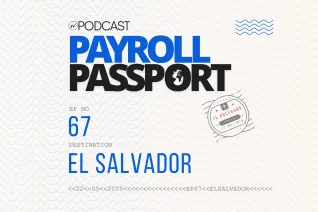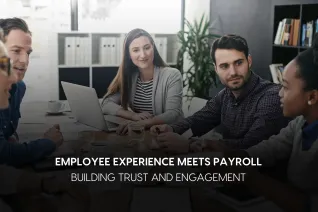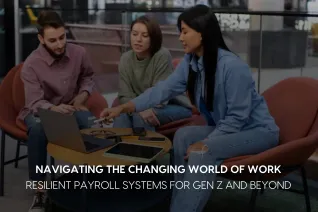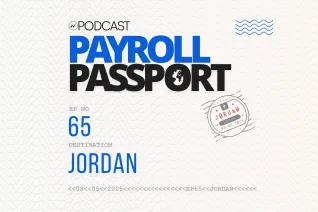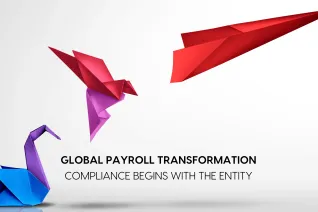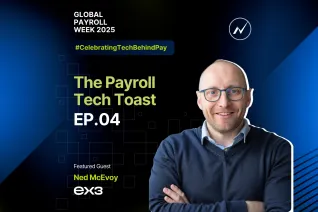How Building a Better Payroll System Leads to a Better Workplace for Everyone
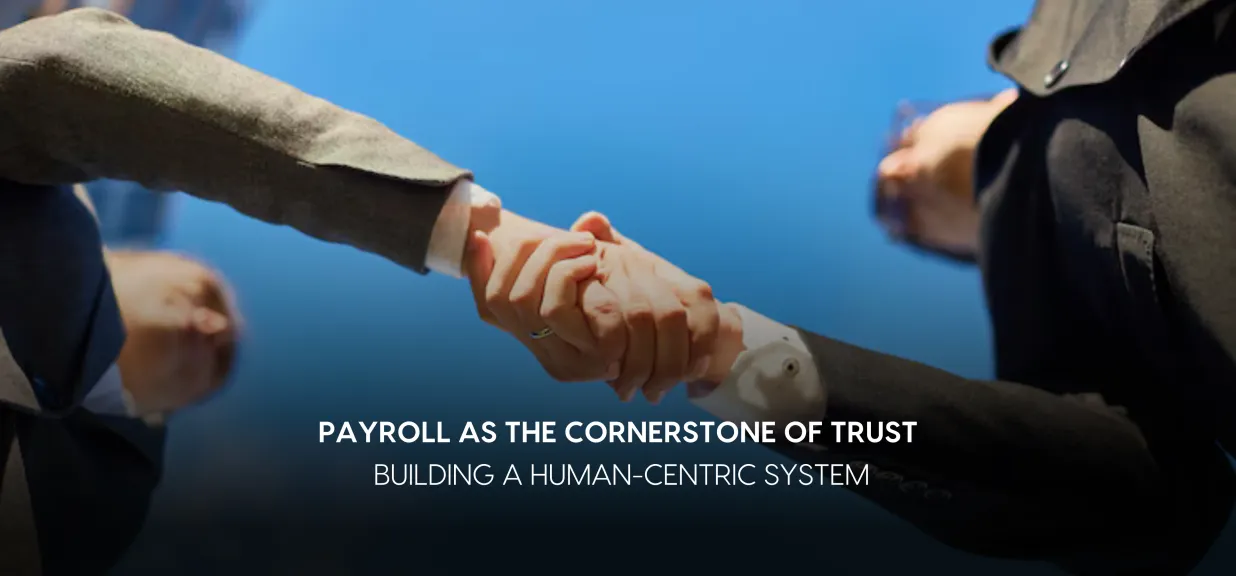
When Getting It Wrong Taught Me What's Right in Payroll
Early in my Payroll career, I witnessed a payroll mishap that left a lasting impression. A group of new joiners' salaries were delayed due to a manual error by HR, but the real issue wasn't the delay; it was the lack of communication. No one explained what had happened. The silence created stress, frustration, and a sense of being undervalued among the employees. So, when the same HR person (local HR partner) met them and explained what had happened and when they would get paid, they were thankful and happy, and they invited the HR person to join them in the pub that Friday! That experience became a defining moment. I realized then that payroll isn't just a backend function; it's the wall of trust between an organization and its people.
Fast forward to today, and while technology has reshaped how we process payroll, the emotional contract it represents remains unchanged.
"At the heart of every payslip is a person, and people deserve clarity, care, and confidence."
Payroll Then vs. Now: From Manual to Machine Learning
Payroll has evolved from complex ledgers and spreadsheets (Formulated, macro-enabled sometimes!!) marathons to sophisticated, AI-powered cloud platforms that complete the process in minutes. Machine learning models now forecast tax liabilities, detect anomalies, and automate cross-border compliance tasks. Thanks to data-driven systems and integrated platforms, what used to take weeks now happens in real-time.
Yet, despite these advancements, some challenges remain unchanged: compliance complexity, cross-border regulation, and ever-growing employee expectations. Today's payroll systems must navigate these constants while improving employee experience.
For example, one large European headquartered company recently transitioned from siloed regional payroll tools to a unified, AI-enhanced system. Not only did payroll accuracy improve, but they also noted a 25% drop in employee payroll queries, simply because the system now anticipated issues and offered proactive resolutions.
ALSO READ | The Hidden Power of Payroll in Shaping Employee Engagement
AI in Payroll: Promise, Progress, and a Pause for Caution
There's no doubt that AI tools are transforming payroll. AI-powered systems allow HR, Payroll, & Finance teams to operate more efficiently and at scale, from automated tax calculations, dashboards, and multilingual chatbots to intelligent compliance alerts. Routine queries like salary slips, tax declarations, or bonus timelines are now addressed instantly via virtual assistants, freeing HR to focus on strategic needs.
However, there's a caveat. Without careful design, AI can become impersonal. Algorithms may flag anomalies but miss context. A chatbot may answer accurately but fail to detect frustration.
When artificial intelligence is used without empathy, it risks damaging the trust it aims to build. One multinational firm learned this the hard way when its chatbot repeatedly miscommunicated variable pay details to its sales teams. The confusion led to missed expectations and impacted morale. The lesson? AI should enhance human connection, not replace it.
Empathy in Payroll: People Before Processes
It's a system that doesn't just calculate; it communicates. It provides not just numbers but context. Imagine an AI-powered payslip assistant that proactively explains a tax deduction or a bonus adjustment in plain language. Or a system that escalates complex queries to a human when it senses frustration or urgency.
For instance, we recently saw a tech-savvy organization that introduced an AI chatbot capable of understanding tone and sentiment in employee queries. If an employee sounded anxious, the query would be flagged for immediate human attention. "Within three months, our employee satisfaction with payroll services rose by 20%", - their Global HR shared service leader said with a grin at one of our events in Bangalore.
"Empathy bridges the emotional gap between automation and assurance when built into AI systems. It fosters employee satisfaction, deepens trust, and elevates payroll from a transaction to a relationship."
Designing the Employee Journey Around Trust
When payroll teams map the employee journey from onboarding to exit, they see payroll not as a monthly task but as a touchpoint in the employee experience.
Think about it: The joy of a performance bonus coming up, the stress of filing taxes, the excitement of a sales closure, or the annoyance of a delayed reimbursement. Each of these moments shapes perception.
For example, a tech services company found that new hires were often confused about their first payslip. By introducing an onboarding payroll video and FAQ guide tailored to their journey, they cut down first-month payroll tickets by 40%.
Mapping this journey enables payroll to anticipate needs, automate reminders before tax deadlines, guide workflows for employee submissions, or even provide explainer videos on claims processes or bonus structures. It transforms payroll from reactive to proactive, reinforcing trust and transparency.
Global Payroll with a Local Touch
Organizations span geographies in today's future of work, but employee expectations remain intensely local. A one-size-fits-all payroll model doesn't work.
One of our major clients, headquartered in Europe but with teams across APAC and LATAM, faced this challenge. In Japan, where accuracy and etiquette are critical, even a minor error in payslip formatting caused dissatisfaction. In Brazil, real-time access and responsive communication were key to trust. By localizing AI tools, translating interfaces, adjusting for regional compliance, and incorporating cultural norms, payroll became accurate and empathetic. The result? Greater retention, fewer queries, and a more unified global workforce.
Empowerment Through Transparent Payroll Tools
Employees don't want to send emails for things they should be able to do themselves. This is where self-service functionality becomes transformational. From downloading old Payslips to updating bank details or accessing tax forms like Form 16, self-service portals put control in the hands of employees. And when integrated with mobile apps, they offer convenience that aligns with modern workstyles.
One large telecom leader saw remarkable results after rolling out a multilingual payroll self-service: 80% of common queries were resolved without HR intervention, and employee satisfaction scores in their annual engagement survey spiked.
But self-service is only half the equation. Transparency matters as much. Employees need a clear, understandable breakdown of their pay, earnings, deductions, bonuses, and benefits. When the system explains every rupee, it builds fairness and confidence.
ALSO READ | The Role of Payroll in Organizational Success
What Makes a Payroll Experience Truly Seamless and Engaging?
A great payroll experience is what employees rarely notice—until it fails. But what makes it truly seamless and engaging?
- Accuracy: Salaries must be right every single time.
- Predictability: Clear timelines for processing reimbursements or bonuses eliminate guesswork.
- Ease of Use: You're already behind if your payroll interface isn't mobile-friendly.
- Integration: Systems should talk HR, time, leave, and payroll data, and they must sync automatically.
- Support: Whether through a chatbot, ticketing system, or live help, employees must feel supported.
- Education: Payroll systems that educate employees on tax-saving or compensation planning go beyond transactions; they empower.
An India HQ Customer of ours took this approach by embedding an earnings dashboard in their payroll portal. Employees could track bonuses, vesting schedules, and tax projections in one place. The impact? Increased retention of top performers, who cited financial clarity as a major driver.
A Real-World Example: Payroll That Builds Morale
A leading European consumer goods firm in over 26 countries struggled with disjointed payroll systems. Regional inconsistencies led to confusion, delays, and dissatisfaction.
In Singapore, expat reimbursements were frequently delayed. In Germany, mobile engineers struggled with payslip confusion globally. The UK team lacked visibility into RSU payouts.
The result? Payroll satisfaction dipped below 60%, and attrition rose, particularly among mid-level staff.
The company partnered with Neeyamo to transform its global payroll. Key actions included:
- A centralized, cloud-based payroll platform with localized compliance.
- Self-service portals offer real-time access to payslips, tax forms, and breakdowns.
- Monthly payroll newsletters in local languages explaining changes and deductions.
- S&U (Satisfied or Unsatisfied) pulse surveys to capture feedback.
In one year, the results were dramatic:
- 99.8% payroll accuracy globally.
- 88% employee satisfaction with payroll.
- Reduced attrition in Singapore and Germany.
Payroll became a trust-building tool, not a point of friction.
The secret wasn't just technology; it treated payroll as a strategic component of the employee experience.
The Leadership Imperative: Principles Over Platforms
To my fellow leaders: Technology alone won't win the future of work. Yes, we need intelligent, AI-powered, data-driven systems, but we also need a guiding compass.
Transparency, accountability, and empathy are the principles that must anchor every payroll transformation. We must champion a culture where payroll is not a cost center but a value creator. When we get it right, payroll drives employee satisfaction, retention, and trust.
Final Thoughts
As we embrace artificial intelligence in payroll, let's not forget the "I" that matters most: the individual. Behind every payslip is a person with hopes, obligations, and dreams. When payroll systems are designed with empathy and transparency, they do more than process salaries; they build workplaces people want to be part of. Let's design payroll systems that don't just calculate but connect.
Latest Resources
Stay informed with latest updates
If you're curious and have a thirst for knowledge pertaining to the HR, payroll, and EOR universe, don't miss out on subscribing to our resources.



